Introduction
Have you ever come across a plant that seems to belong to a fairytale? The Black Alocasia is just that a mesmerizing plant that stands out with its dramatic dark foliage and unique appearance.
Whether you’re an avid gardener or someone just starting to dabble in houseplants, the Black Alocasia will captivate your heart and add a touch of exotic beauty to your home.
In this guide, we’ll explore everything you need to know about the Black Alocasia, from its origins to care tips, ensuring your plant thrives and brings joy to your space.
Table of Contents
What is Black Alocasia?
Black Alocasia, also known as Alocasia ‘Black Velvet’ or ‘Black Magic,’ is a striking member of the Araceae family.
Its large, velvety leaves, often dark green to nearly black, feature prominent white veins, creating a dramatic contrast that makes it a popular choice among plant enthusiasts.
But what exactly makes this plant so special? Let’s delve into its origins and characteristics to find out.
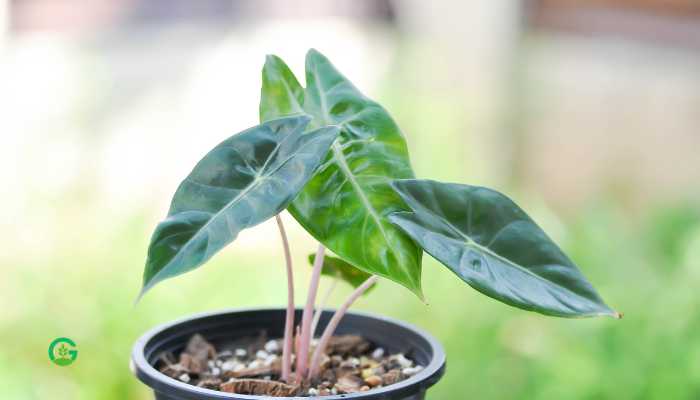
Origins and History
Black Alocasia hails from the tropical rainforests of Southeast Asia, where it thrives in the warm, humid climate.
The plant’s unique appearance and adaptability have made it a beloved ornamental plant worldwide.
Historically, Alocasias have been revered in various cultures, often associated with mystery and elegance due to their unusual and captivating look.
Types of Black Alocasia
There are several varieties of Black Alocasia, each with its own unique features. Some popular types include:
- Alocasia ‘Black Velvet’: Known for its dark, velvety leaves and compact size, making it ideal for indoor cultivation.
- Alocasia ‘Black Magic’: Features larger leaves with a more pronounced black hue, perfect for adding a bold statement to your garden or home.
- Alocasia ‘Regal Shield’: Although not entirely black, this variety has dark green leaves with a metallic sheen, offering a slightly different but equally stunning appearance.
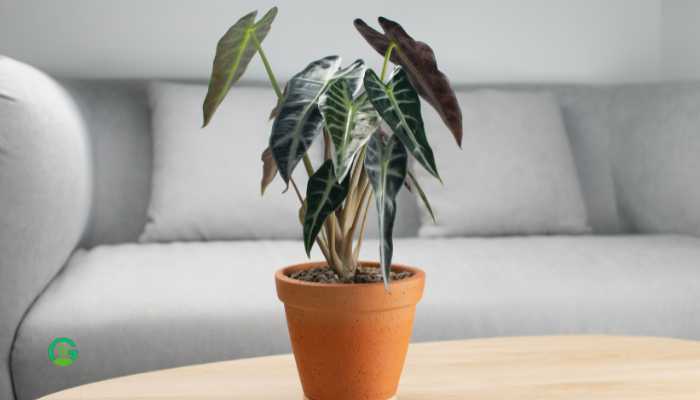
Ideal Growing Conditions
Creating the perfect environment for your Black Alocasia is key to its health and growth. Here are some tips to ensure your plant thrives:
Light
Black Alocasia prefers bright, indirect light. Direct sunlight can scorch its delicate leaves, so it’s best to place it near a window with filtered light or in a well-lit room.
Temperature
Being a tropical plant, Black Alocasia thrives in warm temperatures. Aim for a range of 65-80°F (18-27°C). It’s important to avoid sudden temperature drops, as these can stress the plant.
Humidity
High humidity is crucial for Black Alocasia. If your home is dry, especially during winter, consider using a humidifier or placing a tray of water near the plant to maintain moisture levels.
Planting and Repotting
When planting or repotting your Black Alocasia, choose a well-draining soil mix to prevent waterlogging, which can lead to root rot. A mixture of potting soil, perlite, and orchid bark works well. Repotting should be done every 1-2 years or when the plant outgrows its pot.
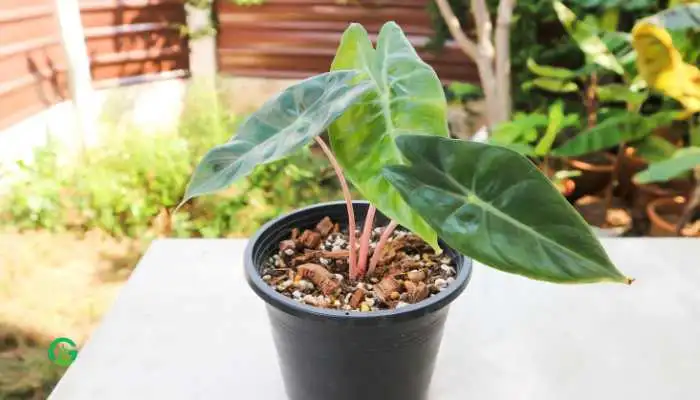
Watering Needs
Black Alocasia enjoys consistently moist soil but is sensitive to overwatering. Water your plant when the top inch of soil feels dry, ensuring thorough watering while allowing excess water to drain away. Remember, it’s better to underwater than overwater this plant.
Fertilizing Your Black Alocasia
Feed your Black Alocasia with a balanced, water-soluble fertilizer every 4-6 weeks during the growing season (spring and summer). Reduce feeding during fall and winter when the plant’s growth slows down.
Pest and Disease Management
Black Alocasia can be susceptible to pests like spider mites, aphids, and mealybugs. Regularly inspect your plant for signs of infestation and treat it with insecticidal soap or neem oil if needed. Good air circulation and proper watering can help prevent common diseases like root rot and leaf spot.
Image | Product Name | Review | Price |
Pruning and Maintenance
Regular pruning helps maintain the plant’s shape and promotes healthy growth. Remove any yellowing or damaged leaves to prevent disease spread. Wipe the leaves with a damp cloth to keep them clean and dust-free.
Propagation Methods
Black Alocasia can be propagated through division or rhizome cuttings. During repotting, carefully separate the rhizomes and plant them in separate pots. Ensure each division has roots and a few leaves for successful propagation.
Common Issues and Solutions
Yellowing Leaves
Yellowing leaves can indicate overwatering or poor drainage. Ensure your plant is in well-draining soil and adjust your watering schedule accordingly.
Wilting
Wilting can be a sign of underwatering or low humidity. Check the soil moisture and increase humidity levels if needed.
Pests
Regularly inspect your plant for pests and treat infestations promptly with insecticidal soap or neem oil.
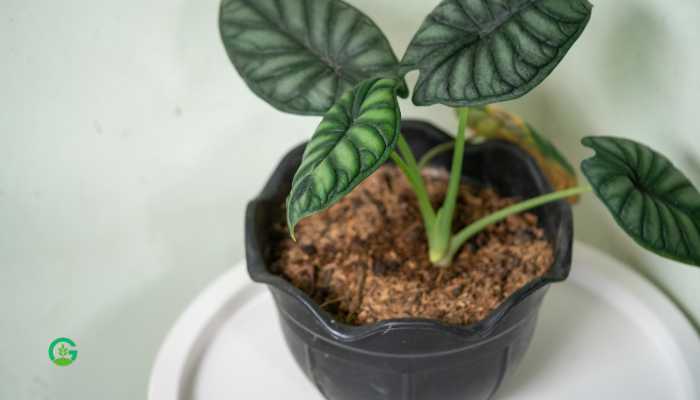
Seasonal Care Tips
Spring and Summer
During the growing season, ensure your Black Alocasia receives adequate light, water, and nutrients. This is the time when the plant will show the most vigorous growth.
Fall and Winter
In cooler months, reduce watering and feeding as the plant’s growth slows down. Maintain humidity levels to prevent leaf damage.
Decorating with Black Alocasia
Black Alocasia’s striking appearance makes it a perfect centerpiece for any room. Place it in decorative pots that complement its dark foliage, or use it as a focal point in a group of mixed houseplants for added visual interest.
Read More
Benefits of Black Alocasia
Apart from its aesthetic appeal, Black Alocasia can improve indoor air quality by filtering toxins. Its unique look also brings a touch of nature and tranquility to indoor spaces, making it a great addition to home and office environments.
Conclusion
The Black Alocasia is more than just a plant—it’s a statement piece that brings beauty and elegance to any space. With the right care, this captivating plant can thrive and continue to mesmerize you with its dark, velvety leaves and unique charm. Whether you’re an experienced gardener or a novice, the Black Alocasia is a wonderful addition to any plant collection.
FAQs
How often should I water my Black Alocasia?
Water your Black Alocasia when the top inch of soil feels dry. Ensure thorough watering but allow excess water to drain to avoid root rot.
Can Black Alocasia grow in low light conditions?
While Black Alocasia prefers bright, indirect light, it can tolerate low light conditions. However, its growth may slow down, and its leaves might not be as vibrant.
What should I do if my Black Alocasia’s leaves turn yellow?
Yellowing leaves can be a sign of overwatering. Check the soil moisture and ensure the plant is in well-draining soil. Adjust your watering schedule as needed.
How can I increase humidity for my Black Alocasia?
Increase humidity by using a humidifier, placing a tray of water near the plant, or misting the leaves regularly.
What type of fertilizer is best for Black Alocasia?
Use a balanced, water-soluble fertilizer every 4-6 weeks during the growing season. Reduce feeding during fall and winter when the plant’s growth slows down.
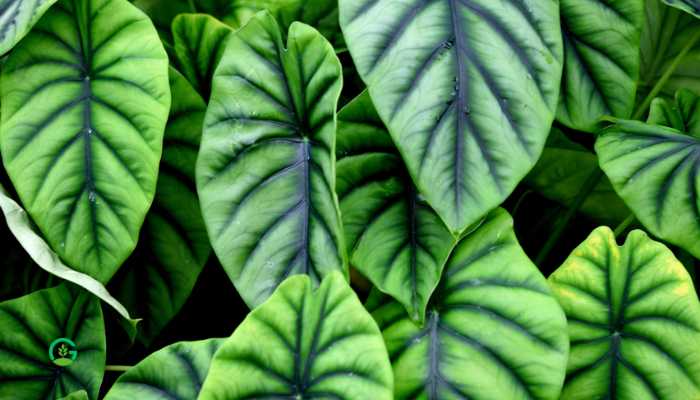




















1 thought on “Best Black Alocasia: Care Guide and Tips for a Thriving Plant”